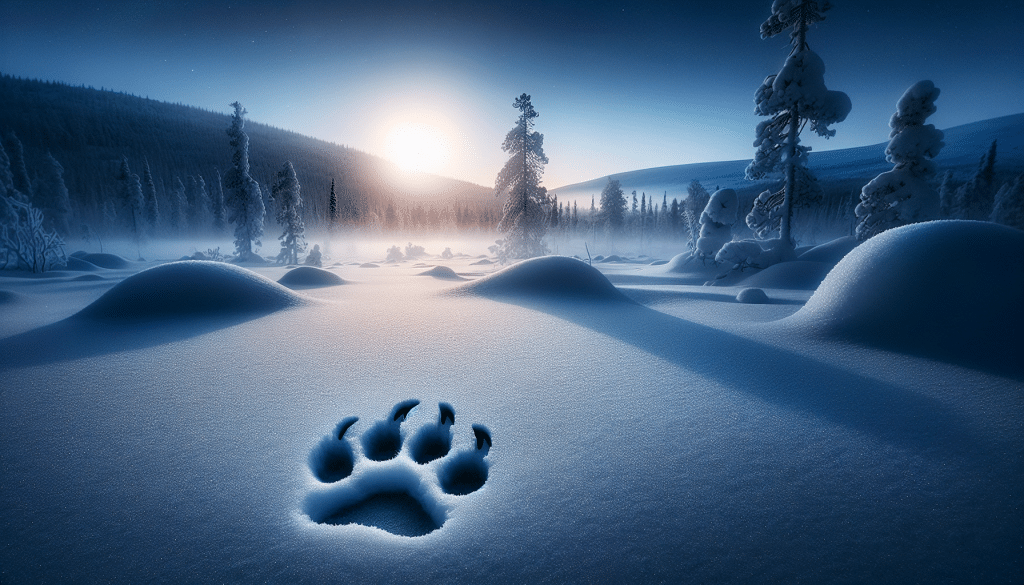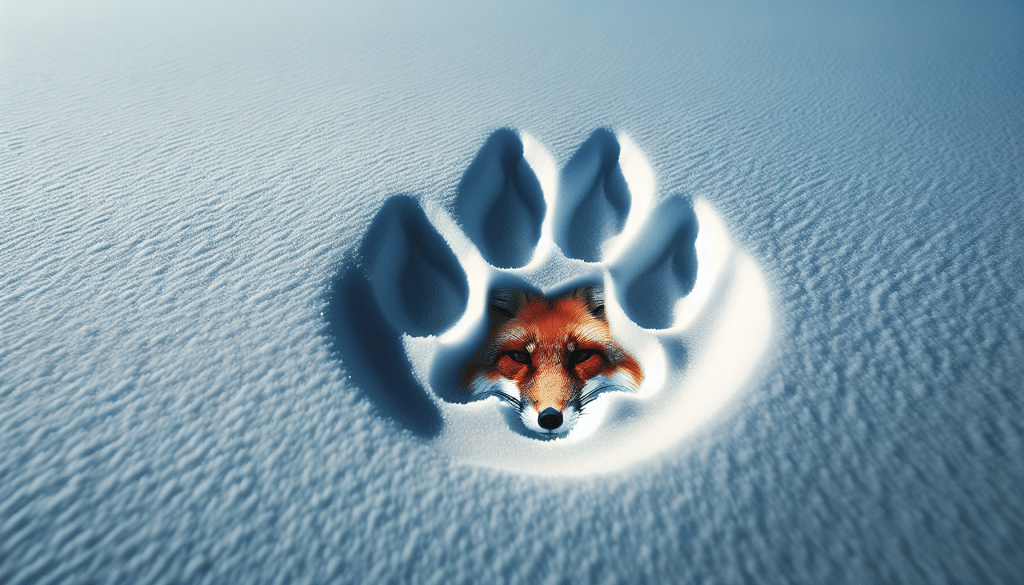So, you’ve decided to embark on an adventure into the enchanting world of red foxes, eh? Well, get ready to be whisked away into their natural habitat, where these sly creatures roam with wild abandon. As you plunge headfirst into the heart of their domain, you’ll uncover the hidden secrets of their dens, witness their cunning hunting techniques, and maybe even catch a glimpse of their mischievous antics. So grab your binoculars and put on your hiking boots, because it’s time to join the red foxes in their wild kingdom!

Overview of the Red Fox
The Red Fox (Vulpes vulpes) is a charismatic and adaptable mammal that is widely distributed across the globe. With its distinctive rusty-red fur and bushy tail, it is known for its cunning nature and ability to thrive in various environments. Let’s delve into the physical characteristics, behavioral traits, and distribution of the Red Fox in detail.
Physical characteristics of Vulpes vulpes
The Red Fox is a medium-sized carnivore, measuring approximately 18 to 35 inches in length, excluding the tail. They weigh around 7 to 24 pounds, with males being slightly larger than females. Apart from its iconic reddish coat, the fox also exhibits a white belly and throat. Their bushy tail, known as a “brush,” can measure up to three-quarters of their body length.
Behavioral traits and adaptability
Red Foxes are highly adaptable creatures, adept at surviving in a variety of environments. They have dynamic behavioral traits, displaying both solitary and social tendencies. While they typically lead solitary lives, they are known to form small family groups during breeding seasons. These clever canines are nocturnal by nature, allowing them to be more elusive and effective predators.
Distribution and range across the globe
The Red Fox proudly holds the title for being the largest species within the Vulpes genus. They can be found throughout North America, Europe, Asia, and even parts of North Africa. Their impressive range spans areas of diverse climates and terrains, owing to their remarkable adaptability. From the dense forests of North America to the scorching deserts of the Middle East, Red Foxes have managed to call various ecosystems home.
Habitat Requirements
The Red Fox has certain essential habitat requirements to ensure their survival and reproductive success. These include suitable environmental conditions, appropriate shelter, and the need for established territories.
General environmental conditions for habitation
Red Foxes can be found in a wide range of climatic conditions, from the freezing Arctic to scorching deserts. They have adapted to survive in a variety of temperatures and can endure both frigid winters and sweltering summers. Despite their adaptability, they prefer environments with moderate temperatures and ample food sources.
Shelter and den characteristics
When it comes to shelter, Red Foxes are resourceful builders. They are known to dig underground dens, which serve as a secure habitat during mating and rearing of young. These dens are often located in elevated areas near cover, such as rock formations or roots of trees. These cozy dens provide protection from predators and harsh weather conditions.
Territorial behavior and range size
Red Foxes exhibit territorial behavior and mark their territories using scent glands. A Red Fox’s territory can range from as small as one square mile to over five square miles, depending on the availability of resources. Foxes defend their territories fiercely, marking boundaries and engaging in vocalizations to communicate with neighboring individuals.

Typical Ecosystems Inhabited by Red Foxes
Red Foxes have managed to adapt and thrive in a variety of ecosystems around the world. Let’s explore some of the primary habitats where these cunning creatures can be found.
Forests and woodlands
Red Foxes are well-suited to forested environments, such as deciduous and coniferous forests. The dense vegetation provides ample cover for hunting and denning, allowing them to remain hidden from predators and prey. Forests offer diverse food sources, such as small mammals, birds, and insects, ensuring a reliable food supply for the foxes.
Grasslands and prairies
In grassland and prairie ecosystems, Red Foxes take advantage of the abundance of open space. Their agility and speed make them proficient hunters in these expansive landscapes. They primarily prey on small mammals, including rabbits and voles, which are abundant in grassy habitats.
Arctic and alpine zones
The Red Fox’s adaptability truly shines in extreme environments, such as the Arctic and alpine zones. Despite the harsh conditions, these resilient animals have evolved to withstand freezing temperatures and limited resources. Their thick fur and compact bodies enable them to conserve heat, while their keen hunting skills help them secure prey even in snowy landscapes.
Urban and suburban environments
While foxes may evoke images of rustic landscapes, they have also successfully colonized urban and suburban areas. Human-modified environments provide an abundance of food sources, including scavenging opportunities from garbage bins. Red Foxes have proven to be excellent adapters, coexisting with humans in close proximity and learning to navigate urban structures.
Adaptations to Diverse Environments
The Red Fox’s survival in diverse environments can be attributed to a range of remarkable adaptations. Let’s take a closer look at some of these adaptations, including coping with temperature extremes, camouflage, seasonal fur changes, and dietary flexibility.
Coping with temperature extremes
Red Foxes have evolved to cope with a wide range of temperatures, thanks to their adaptability and distinct physical attributes. In colder climates, their long and luxurious fur provides exceptional insulation against the cold. In contrast, foxes inhabiting desert regions have shorter fur, allowing them to dissipate heat more efficiently.
Camouflage and seasonal fur changes
To remain inconspicuous while hunting or hiding from predators, Red Foxes are endowed with excellent camouflage. Their reddish-brown fur blends seamlessly into forest undergrowth and prairie grasses. Additionally, their fur undergoes seasonal changes, adapting to the environment. In winter, the fur becomes thicker and whiter, enabling the foxes to blend into snowy landscapes.
Dietary adaptability
Red Foxes are true omnivores, meaning they have a versatile diet. While they primarily prey on small mammals like rabbits and rodents, they also consume birds, insects, fruits, and even carrion. This dietary flexibility allows them to adapt to changing food availability in different ecosystems, ensuring their survival in even the harshest environments.

Red Fox Populations in North America
Red Foxes have a robust presence throughout North America, making their homes in various habitats across the continent. Let’s explore the distribution patterns, the impact of human alteration of landscapes, and the conservation status of Red Foxes in this region.
Distribution patterns in North America
Red Foxes are found throughout North America, from the boreal forests of Alaska to the southern states. They are most abundant in habitats with a mix of forested areas, grasslands, and agricultural fields. Their populations often align with prey availability, such as the abundance of cottontail rabbits and voles.
Impact of human alteration of landscapes
As human populations have expanded and landscapes have changed, Red Foxes have proven themselves adaptable yet again. They have not shied away from colonizing urban and suburban areas, taking advantage of human-modified environments. However, this expansion also means increased encounters with humans and potential conflicts, such as predation on livestock or scavenging through human garbage.
Conservation status and management efforts
Red Foxes in North America are currently not considered a threatened species and are subject to minimal management efforts. They are not hunted extensively for fur or sport in this region. However, ongoing research is crucial to monitor their populations and ensure that their habitats remain intact amid human development.
European Red Fox Habitats
Europe is home to thriving populations of Red Foxes, with unique habitats and challenges to navigate. Let’s explore the major habitats, human-wildlife conflict, coexistence, and the role of Red Foxes in European ecosystems.
Major red fox habitats in Europe
Europe offers diverse habitats for Red Foxes, including woodlands, grasslands, mountains, and agricultural areas. Woodlands provide excellent cover for hunting and dens, while grasslands offer ample prey opportunities. The rolling hills and mountains of Europe also host fox populations, thanks to their adaptability to varying terrains and conditions.
Human-wildlife conflict and coexistence
In densely populated regions of Europe, conflicts between humans and Red Foxes can arise. Foxes scavenging in urban areas or predating on outdoor pets can become a concern for residents. However, many European countries have adopted policies to promote coexistence. Public education, responsible waste management, and targeted control measures help mitigate conflicts and foster understanding of these charismatic creatures.
Role in European ecosystems
Red Foxes play a crucial role in European ecosystems as mesopredators. By regulating populations of small mammals and maintaining balance in the food chain, they contribute to the overall health of ecosystems. Their presence helps control rodent populations, reducing the impact of crop damage and the risk of diseases transmitted by pests.
The Red Fox in Asia and the Middle East
The Red Fox’s adaptability is evident in its ability to thrive in the diverse and challenging environments of Asia and the Middle East. Let’s examine their adaptations to desert habitats, forests, mountainous regions, and their interaction with ecosystems unique to these regions.
Adaptations to desert habitats
In arid regions such as the deserts of Asia and the Middle East, Red Foxes demonstrate incredible desert adaptations. Their large ears help dissipate heat, and their slender bodies enable them to conserve water. They are primarily nocturnal in these harsh environments, reducing water loss during the scorching daytime temperatures.
Forests and mountainous regions as homes
Red Foxes are equally at home in the forests and mountainous regions of Asia. Thick forests provide ample cover for hunting and denning, while mountainous terrains offer a diverse range of elevations and microhabitats. These adaptable foxes can navigate through forested slopes and rocky cliffs, successfully making homes in challenging and rugged landscapes.
Interaction with Asiatic ecosystems
Red Foxes in Asia and the Middle East interact with diverse ecosystems and wildlife, contributing to the ecological balance. They serve as predators, helping control populations of rodents and other small mammals. Their presence also attracts scavengers, such as birds of prey, who benefit from their kills. Red Foxes play a vital role in maintaining the delicate balance of Asiatic ecosystems.
Impact of Seasonal Changes
Seasonal changes have a significant impact on the behavior and survival strategies of Red Foxes. Let’s explore how they adapt during different seasons, focusing on breeding and rearing of young, foraging, and food storage strategies.
Behavioral changes across seasons
With the onset of winter, Red Foxes undergo behavioral changes geared towards survival. Their increased nocturnal activity helps them conserve energy in colder temperatures. Additionally, they often shift their foraging habits, focusing on scavenging or caching food to sustain themselves during leaner times.
Breeding and rearing of young
Breeding season for Red Foxes typically occurs in January or February, varying slightly across their range. Females, known as vixens, give birth to litters of four to six kits after a gestation period of around 53 days. During this time, male foxes, or dog foxes, assist in food provision for the family. The female raises the young in the safety of the den until they are old enough to venture out and explore their surroundings.
Foraging and food storage strategies
Red Foxes are opportunistic hunters, targeting a variety of small mammals, birds, and invertebrates throughout the year. During seasons of abundance, such as spring and summer, they often gorge on food, eating enough to sustain themselves during leaner times. They are also known for their habit of caching excess food in multiple locations, enabling them to retrieve it when resources are scarce.
Threats to Red Fox Habitats
Despite their adaptability, Red Foxes face several threats to their habitats, which impact their survival and well-being. Let’s explore some of the primary threats, including habitat loss due to human expansion, the effects of climate change, and predation and disease risks.
Habitat loss due to human expansion
As human populations expand and encroach upon natural habitats, Red Foxes often face habitat loss and fragmentation. Deforestation, urbanization, and agricultural practices can result in the destruction of prime fox habitat, compromising their survival and disrupting the delicate ecological balance they contribute to.
The effects of climate change
Climate change poses a significant threat to Red Foxes and numerous other species around the world. Changing temperature patterns, altered precipitation, and shifts in seasonal rhythms can impact prey availability, disrupt breeding cycles, and affect the availability of suitable habitats. These changes can have cascading effects on the populations of Red Foxes and their interactions with other species.
Predation and disease risks
While Red Foxes are superb hunters and typically occupy the role of predators, they are not exempt from predation themselves. Larger predators such as wolves, coyotes, and cougars can pose a threat to fox populations, particularly in areas with overlapping ranges. Additionally, Red Foxes are susceptible to various diseases, including rabies and canine distemper, which can impact their populations.
Observing Red Foxes in the Wild
For wildlife enthusiasts, observing Red Foxes in their natural habitat can be an exciting and rewarding experience. However, certain considerations must be kept in mind to ensure the safety and ethical practices of observing wildlife.
Safety and ethical considerations
When observing Red Foxes, it is crucial to maintain a respectful distance, ensuring that you do not interfere with their natural behavior or cause unnecessary stress. Avoid approaching dens or disturbing fox families during sensitive breeding periods. It’s essential to prioritize the well-being of the animals and the preservation of their habitats.
Techniques for wildlife enthusiasts
Patience and keen observation skills are the keys to successful wildlife viewing. Red Foxes are primarily active during twilight hours and nighttime, so early mornings or evening walks are ideal for observing them. Familiarize yourself with their behaviors, such as hunting or denning patterns, to increase your chances of encountering them in their natural settings.
Contribution to citizen science projects
For those passionate about contributing to scientific research, there are various citizen science projects that collect data on Red Fox populations. Participating in initiatives like tracking fox sightings, monitoring den sites, or recording behaviors can provide valuable information to researchers, aiding in conservation efforts and understanding these enigmatic creatures.
In conclusion, the Red Fox is a highly adaptable and charismatic species that has managed to establish a presence across diverse ecosystems worldwide. From forests to deserts, and from urban environments to alpine zones, Red Foxes have demonstrated their resourcefulness and ability to thrive in changing landscapes. However, human activities, climate change, and predation risks pose significant threats to their habitats. It is imperative that we appreciate and protect these clever canines, ensuring their continued existence and the vital role they play in balancing ecosystems globally.

